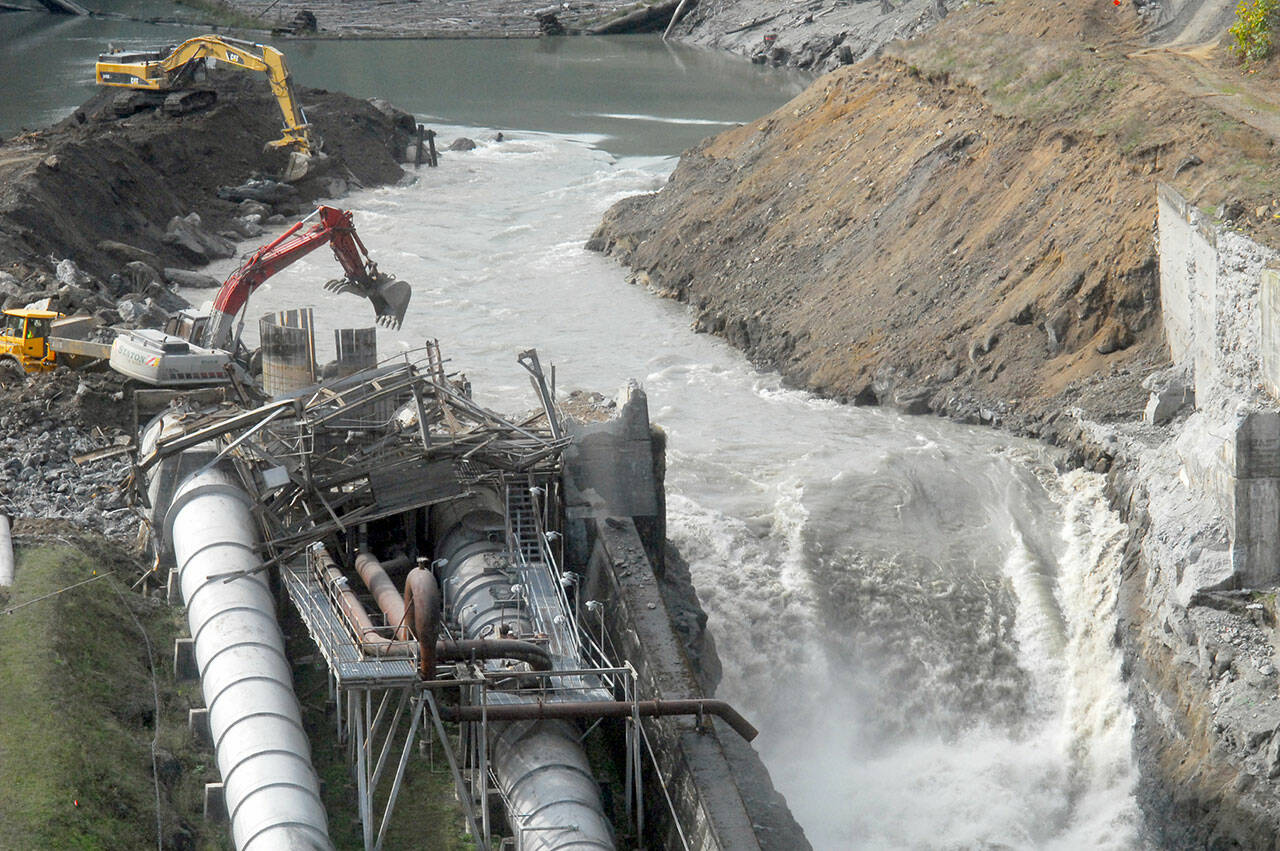PORT ANGELES — The Lower Elwha Klallam Tribe on Tuesday will host a discussion of the removal of dams on the Elwha River and the waterway’s ongoing restoration, while also telling about a larger dam removal in the works for the Klamath River.
“Elwha Ecosystem Restoration — 10 Dam-Free Years and Counting,” will be offered to the public from 6:30 p.m. to 9:30 p.m. in the Little Theater at the Port Angeles campus of Peninsula College, 1502 E. Lauridsen Blvd. Admission will be free but registration is required at https://tinyurl.com/yf7ajv6j.
In addition to Tuesday’s event will be two field trip opportunities open to the public on Wednesday. Information is available upon registration.
On Tuesday, the 2012 film “Restoring Our Rivers,” will be screened; research on the river will be presented and a panel of experts will discuss studies of the Elwha River that advance scientific knowledge about dam removal and river recovery.
The Elwha Dam removal project began Sept. 17, 2011. By March 2012, the 108-foot Elwha Dam was gone. Two years later, the 210-foot Glines Canyon Dam was gone as well.
It is the largest dam removal in United States history, although, as those who attend the event will learn, it might not hold the record much longer.
Panel participant Mike Belchik, a senior water policy analyst for the Yurok Tribe, will discuss progress on the Klamath River dam removal, which will be a larger and more complicated undertaking than the Elwha project. It will involve four dams and two states — Oregon and California.
Other panel speakers are George Pess, a leading researcher on salmon recovery on the Elwha River, and Pao Fernández Garrido of the World Fish Migration Foundation, who will explain the Elwha project’s impact on the dam removal movement in Europe.
Following the conclusion of the speaker panel, the House of Learning, Peninsula College Longhouse, will host a poster session where scientists from many disciplines will present their research. Questions will be encouraged.
“This is a great opportunity to talk to scientists,” said Sarah Morley, a research ecologist in the watershed program at NOAA Fisheries Northwest Fisheries Science Center, who will present her research at the poster session.
Salmon tend to attract much of the attention when the Elwha River recovery is discussed, Morley said, but Tuesday’s event will illustrate the many different research fields focused on the river.
“Salmon are key components of river ecosystems, but they’re part of a larger food web,” said Morley, who has been studying the Elwha River since 2003.
Morley’s work focuses on periphyton—“the slimy stuff on rocks that you slip on when you try to cross a river”— and the invertebrates that feed on it like mayflies and caddisflies that are an important food source for young salmon.
Introducing the public to the many different kinds of research being conducted on the Elwha River and increasing community and citizen engagement in science are among the organizers’ goals for the event, Morley said.
Organizations like Clallam County’s Streamkeepers have been invited to set up tables at the poster session to talk about their work and recruit volunteers for projects and for studies like those being conducted on the Elwha River.
Another goal, Morley said, is making it easier for the scientific community and the public to access, understand and be able to use the great store of data that NOAA has collected on projects like the Elwha River dam removal.
A beta version of a website created by NOAA data management scientists will be available for the public to view and try out.
Following Tuesday’s public event, 98 scientists and educators will gather for a two-day workshop at NatureBridge, where they will share their ideas and research on the Elwha River and dam removal.
It will be a rare opportunity for the those who have been working on the Elwha River to get together, Morley said.
“There have been a lot of folks over the years who have involved in monitoring and studying the Elwha,” Morley said.
“Of course, the Lower Klallam Tribe have been the heart and hub of all of the work, and they’ve funded research that’s been central to scientific study of the river.”
________
Reporter Paula Hunt can be reached at paula.hunt@soundpublishing.com.

